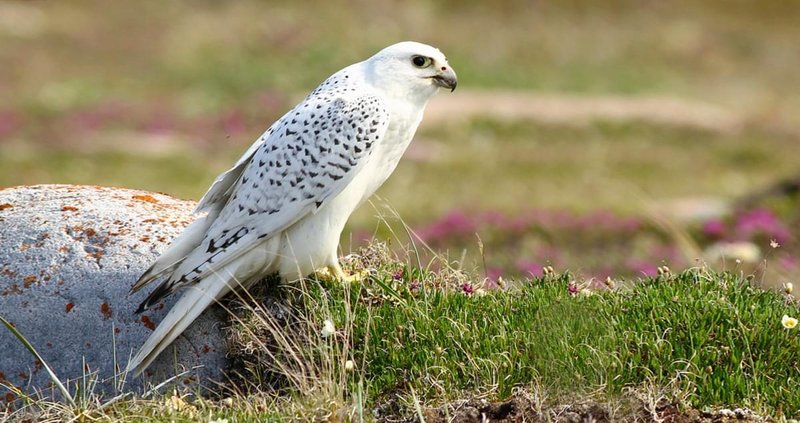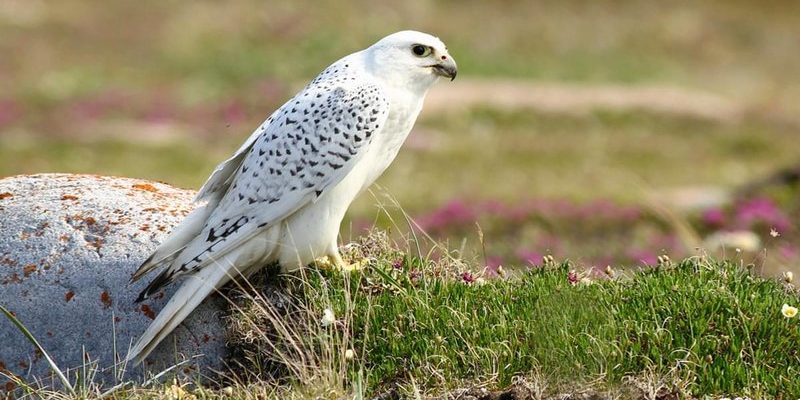
You might picture the gyrfalcon perched high on cliffs, scanning the landscape for prey. But what happens when its territory overlaps with human activity? Like many wild animals, gyrfalcons can exhibit defensive behaviors if they feel threatened or provoked. Understanding their behavior is crucial for anyone who might encounter them in the wild. Here’s the thing: while these birds have the tools to defend themselves, actual attacks on humans are quite rare.
What Is a Gyrfalcon?
The gyrfalcon is part of the falcon family and is native to the Arctic regions. With a wingspan that can reach up to 4.5 feet, they are truly impressive birds. Their feathers can range from striking white to deep gray, helping them blend into their icy environments. You might find them soaring above tundras or perched on rocky cliffs, showcasing their ability to adapt to challenging conditions.
Gyrfalcons primarily hunt small to medium-sized birds, but they are also skilled at taking down rabbits and even some larger prey. Their keen eyesight and rapid dive speeds make them formidable hunters. What’s fascinating is how they can vary in color, which can affect their hunting strategies. Darker gyrfalcons are better suited for low light conditions, while lighter ones blend seamlessly into the snow.
Are Gyrfalcons Aggressive?
When it comes to aggression, gyrfalcons aren’t typically on the offensive. They are more likely to fly away than to confront a perceived threat. That said, if a gyrfalcon feels cornered or if its nest is threatened, it can display aggressive behavior. This might include loud calls and dive-bombing intruders. Imagine a fierce guardian, ready to defend its young: that’s the mindset of a gyrfalcon protecting its territory.
It’s also worth noting that while they have the potential for aggression, most interactions with humans are peaceful. Many birdwatchers find them to be curious creatures rather than aggressive ones. If you’re out hiking or exploring their habitat, it’s best to keep a respectful distance. Doing so helps ensure both your safety and theirs.
How Do Gyrfalcons Interact With Humans?
Gyrfalcons are often seen in remote areas, which means encounters with humans are relatively rare. When they do occur, these interactions can vary significantly. Some gyrfalcons might ignore humans entirely, preferring to remain in their natural routines. Others might react with caution, observing from a distance before deciding whether to fly away.
In captivity, gyrfalcons are trained for falconry, a sport that involves hunting with trained birds of prey. Falconers who work with gyrfalcons emphasize trust and respect. The bond between trainer and bird is crucial; it’s built through careful handling and understanding. This relationship can showcase the gentle side of these otherwise powerful predators.
Cautions When Approaching Gyrfalcons
If you’re out in the wild and spot a gyrfalcon, it’s important to know how to approach or observe them safely. Here are a few things to keep in mind:
- Keep Your Distance: Stay back and use binoculars if you want to observe them closely.
- Don’t Disturb Nests: If you spot a nest, make sure to give it plenty of space. Disturbing a nest can provoke defensive behavior.
- Watch for Signs of Stress: If the bird seems agitated or begins to dive toward you, it’s time to back off.
Honestly, respecting their space is crucial not just for your safety, but for the well-being of these beautiful creatures. Understanding their natural behaviors can help minimize any potential risks.
Can a Gyrfalcon Attack a Human?
While it’s possible for a gyrfalcon to attack if it feels threatened, actual incidents involving humans are extremely rare. They are more likely to rely on their speed and agility to escape rather than confront. That said, there are documented cases where a perched gyrfalcon has swooped down when it felt provoked, especially if it was protecting its nest.
Let me explain a bit further. If you accidentally get too close to a nesting gyrfalcon, it may dive towards you as a warning. This behavior can be surprising, but it’s part of their instinct to protect their young. It’s a reminder that while they can be dangerous in certain situations, they usually prefer flight over fight.
In summary, gyrfalcons are fascinating birds that play an important role in their ecosystems. While they have the capacity to be dangerous if provoked, genuine attacks on humans are quite rare. With their striking appearance and incredible hunting skills, they are more likely to inspire admiration than fear.
If you ever have the chance to observe a gyrfalcon in the wild, remember to respect their space and behavior. By understanding these majestic creatures, we can coexist with them peacefully. So the next time you find yourself in their territory, take a moment to appreciate their beauty from a safe distance—just like you would with any remarkable wild animal.

